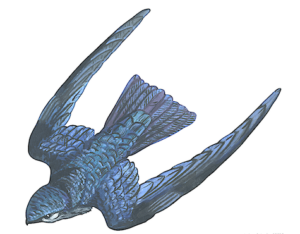Home / EFFECT OF FLUORIDE ON OTHER ANIMAL – Indian Research
EFFECT OF FLUORIDE ON OTHER ANIMALS
Extract from:
by
KARTICK CHANDRA PAL, M.Sc. (Chem)
…Along with human being, chronic fluoride toxicity in the environment imposes a harmful effect on animals.
Chronic exposure to F in water can develop fluorotoxicosis in any animal and the severity varies among species, animals, and their habitat (Choubisa et al., 2011).
Many studies dealt with bones and the teeth examination of wild and domesticated animals for indirect assessment of the fluoride contamination hazards. The bioaccumulation fluoride in mammals generally increases with age. Many studies have done to identify good bioindicators of fluoride pollution collecting the bone samples from herbivorous ungulates, like, European red deer (Cervus elaphus), white-tailed deer (Odocoileus virginianus), roe deer (Capreolus capreolus), sheep (Ovis aries) and horse (Equus caballus) etc. (Suttie et al., 1987; Kierdorf et al., 1996; Boulton et al., 1999; Tataruch and Kierdorf, 2004; Weinstein and Davison, 2004; Choubisa, 2008; Macicek and Krook, 2008; Telesiński and Śnioszek, 2009; Jelenko and Pokorny, 2010).
Several studies have done on the fluoride concentration in teeth and bone of deer from the family Cervidae in north-west Poland, where a major producer of phosphatic fertilizers is located (Dabkowska et al., 1995; Zakrzewska, 1996; Gutowska et al., 2004; Zakrzewska et al., 2005).
But a few ecotoxicological analyses of fluoride were conducted taking omnivorous wild mammals and rarely performed on carnivores and canids (Walton, 1988; Kierdorf et al., 2000; Weinstein and Davison, 2004).
In India, the effects of fluoride have been studied mainly among domestic animals and mostly in cattle (Bos taurus) and buffaloes (Bubalus bubalis) (Choubisa, 1999, 2008, 2007). There are a few reports of ecotoxicological effects of fluoride on other animals like, horses (Equus caballus), donkeys (E. asinus), camels (Camelus dromedarius), goats (Capra hircus), and sheep (Ovis aries), (Choubisa, 2010c; 1999; 2008; 2007; 2010a). Although A recent study also indicated a contributory role of food and its nutrient composition in ameliorating F toxicity in goats and sheep (Choubisa, 2010 b).

